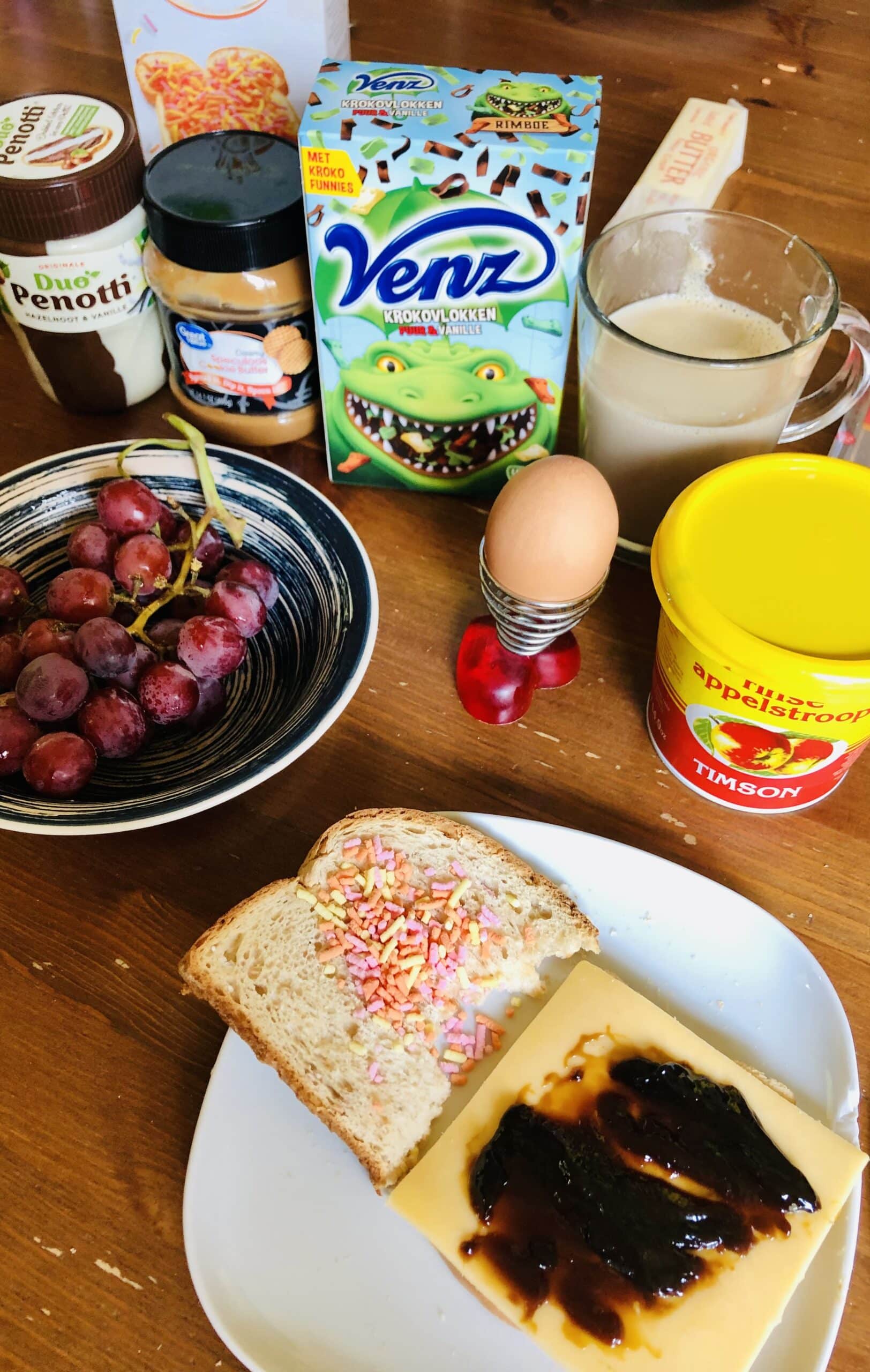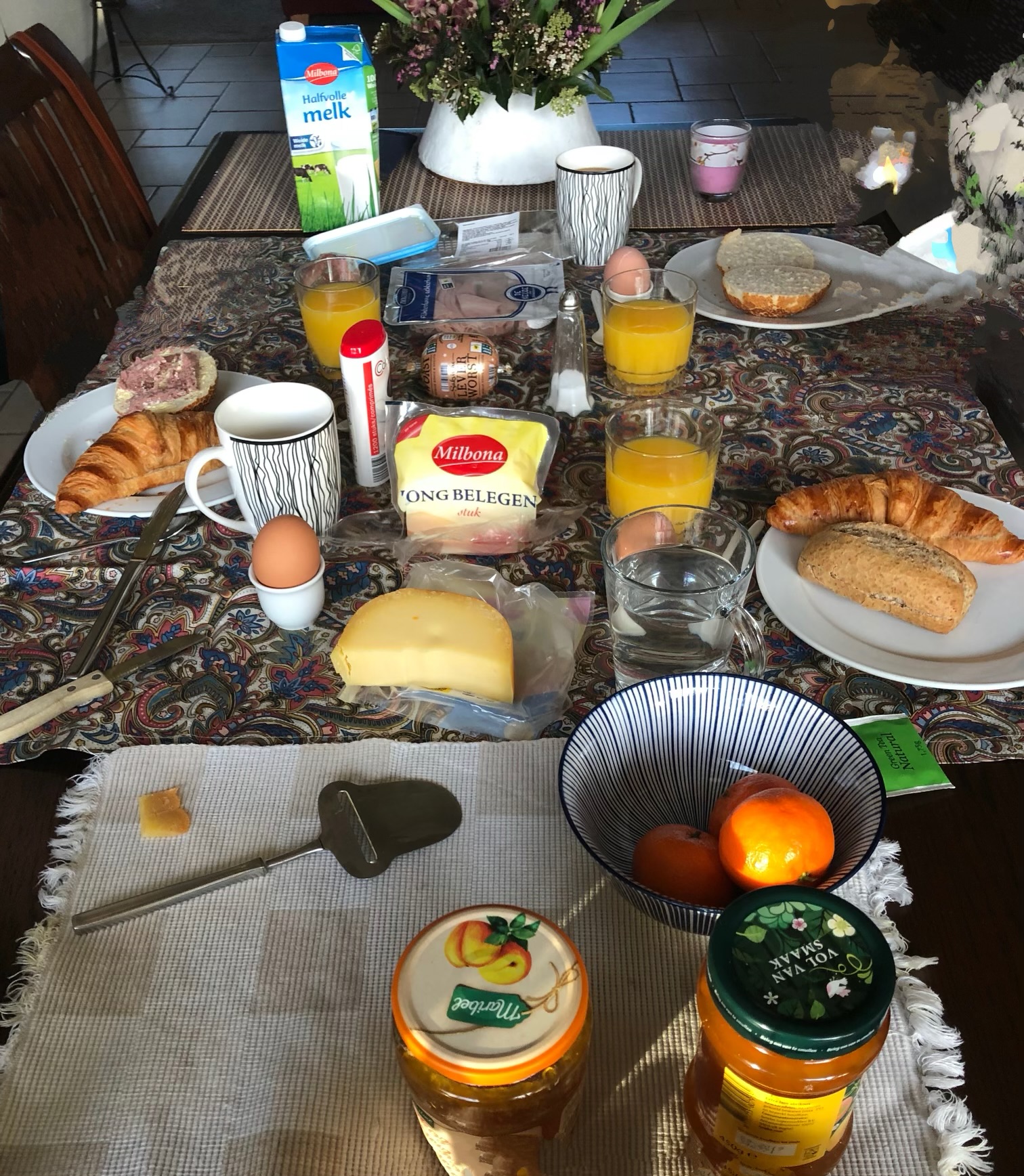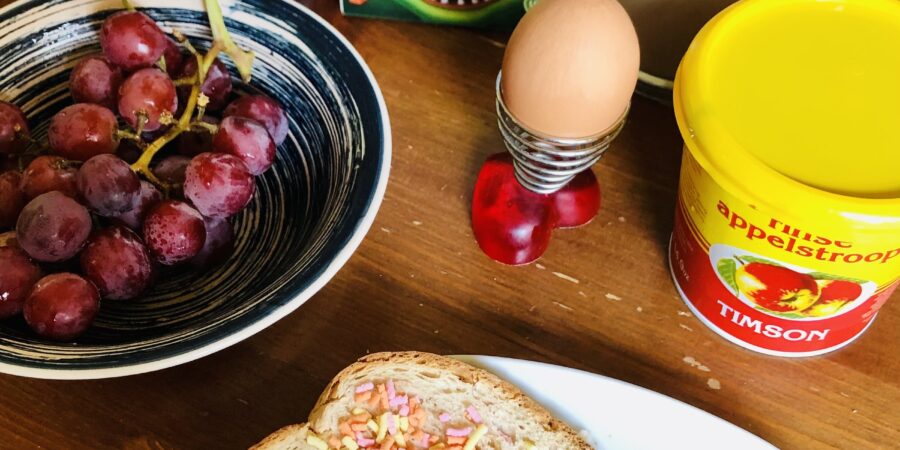A Dutch Breakfast Adventure
Breakfast, the most important meal of the day, varies widely across cultures, each offering its unique morning ritual. In the case of the Dutch, their traditional breakfast, or “ontbijt” as the Dutch call it, is a hearty and wholesome affair that reflects the country’s history, culture, and geography. Last summer we spent a few weeks in the Netherlands. We stayed one night in an old farmhouse turned into a Bed and Breakfast in the small town where my parents live. Oh, how I still remember that breakfast. Join me on a journey to discover the delightful components of a traditional Dutch breakfast!
Dutch vs. American Breakfast: A Colorful Contrast
Let’s start by dispelling the myth that all breakfasts are created equal. Picture the American breakfast – a hearty, beige-colored feast laden with pancakes, bacon, and sausages. In the Netherlands, it’s an entirely different story. During my childhood, we often began the day with “Brinta-pap,” a warm porridge. A similar comfort in the U.S. is “Cream of Wheat or semolina,” with a touch of vanilla custard for that delightful twist. This “Griesmeel-pap” is something I still make sometimes on a cold morning!
In the Netherlands we do serve pancakes, but not usually for breakfast. Pancakes can be sweet (apples, raisins and cinnamon) or savory (melted Gouda Cheese, bacon bits). On cold winter days we eat pancakes with split pea soup for dinner.
“Poffertjes” are small pancakes and not usually eaten for breakfast either, even though some people assume this. We make these baby pancakes for “Koffie-tijd” or an afternoon snack.

Breakfast Stories: From Pressed Juices to Vanilla Pudding
During my first pregnancy, I had an aversion to solid food but needed something nutritious. That’s when my mom introduced me to pressed juices with grains, a delightful find at our local grocery store. My favorite thing was “vanille vla” (vanilla pudding), not a typical breakfast item, but I did it anyway…actually any time of the day….and night!
Dutch Sunday Breakfast or Brunch: A Family Tradition

Sundays in the Netherlands are meant for relaxation, with everyone sleeping in. My dad, the egg master, boiled eggs to perfection, each in its “eierdopje” (small egg holder). We buy fresh rolls from the local bakery, though sometimes we had to rely on frozen rolls, ready to be baked.
Our Sunday Brunch spread included:
- Bread and Butter: At the heart of every Dutch breakfast is bread. The Dutch love their bread, and it’s typically served in a variety of ways. The most common choice is a whole grain slice of bread with a generous spread of butter. But what truly adds a touch of Dutch magic is a piece of Dutch cheese or “hagelslag” It’s a favorite among children and adults alike. Butter is in a butter tub, and not the sticks like here in America. Those are great for baking by the way, because the measurements are on the package. Very handy! The bread is full of grains. It is still hard for me to find a decent loaf of bread in the US.
- Cheese: One of the best known cheeses in the US is Gouda cheese. This internationally renowned cheese originates from the Netherlands and is an integral part of Dutch cuisine. Sliced and served alongside bread or crackers, Gouda cheese adds a creamy, slightly nutty flavor to the morning meal. In the Netherlands we choose the cheese by age, not by name so much, like Swiss, Pepper-jack, Monterey Jack, Colby or Gouda etc. Instead we buy young, middle age, or old cheese. Cheeses usually have the name from the area or city where the cheese is made (Gouda, Edam, Beemster). No Dutch breakfast would be complete without a generous serving of cheese.
- An assortment of slices of Deli meat and eggs: In addition to cheese, Dutch breakfast spreads often include various cold cuts and meats like ham, salami, or “leverworst” (a type of liver sausage). Eggs, whether boiled, fried, or scrambled, are also a popular choice to add some protein to the meal. These elements provide a savory contrast to the sweetness of the “hagelslag”.
- Fruits: Any fruit in season is an addition to the brunch table.
- Jams and Spreads: Besides sprinkles (“Hagelslag” or “Hagelvlokken”) the Dutch also eat spreads like peanut butter (“Pindakaas”) and even things like coconut bread on their slice of bread. “Hagelslag” are small, sweet, and colorful chocolate or sugar sprinkles that are liberally sprinkled over the buttered bread. Our parents made sure we ate something healthy first!
Hot and cold beverages with our Dutch Breakfast
Of course coffee is the #1 drink for breakfast in the Netherlands. The Dutch are in the top 5 of countries in the world where they drink the most coffee. It is interesting that people in the Scandinavian countries are the ones drink the most and the USA doesn’t make it into the top 10.
You can find coffee varieties like the ones at Starbucks more and more over the last past years, but the traditional coffee is black with a little cream or milk and maybe some sugar. We used to drink “Koffie Verkeerd” a lot. This means “coffee wrong”. This is the opposite (the wrong way) of the traditional kind of coffee. A little coffee and a lot of milk. An old and famous coffee brand is Douwe Egberts.

Tea and milk is another favorite. “Pickwick” is the brand which is most famous in the Netherlands. “Pickwick” came from the Douwe Egberts company. Milk with anise is an old common way of drinking warm milk and our kids favorite chocolate milk is “Chocomel”! Warm or cold it doesn’t matter.
We still enjoy our traditional Dutch breakfast for our Sunday brunches here in the US with our family. Little did I know it became one of the favorite things to look forward to for my extended American family as well!
For more information go to Aboutnl.com to read more about the history of a typical Dutch Breakfast.

Hello everyone,
Welcome to my Crafty Dutch Girl blog! Grab a cup of “koffie” and browse through fun blog posts about our Dutch family expat life in the USA, Dutch history, Dutch recipes, Dutch things to do in the USA and all kinds of crafts and activities. Don’t forget to connect with me for new ideas! “Groetjes en tot ziens”.

